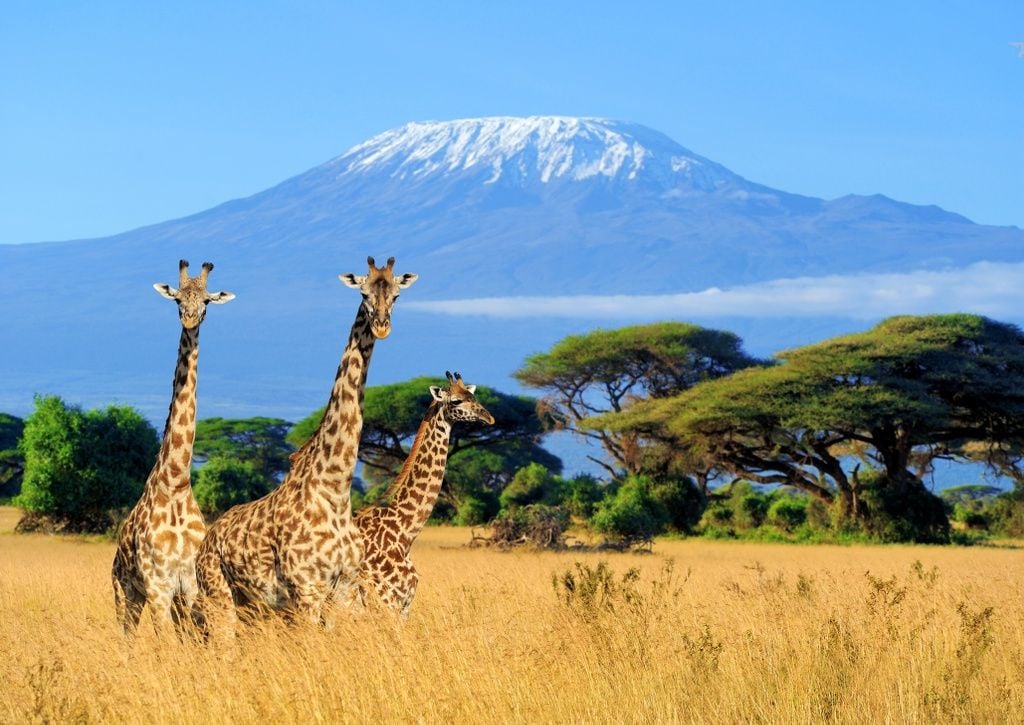At 19,341 feet, Mount Kilimanjaro in Tanzania is the highest freestanding mountain in the world. Thousands attempt the climb every year, battling altitude sickness and tough terrain. My 7-day trek took me through five incredible climate zones, each offering a unique experience.
Starting the Trek My journey began in Marangu, where we arranged our climb with a licensed guide, a must for all trekkers. After a two-hour drive to Rongai Gate, we met our guide, David, and his team before stepping onto the trail.
Montane Forest (6,000 – 9,200 ft) The adventure kicked off in a lush rainforest filled with moss-covered trees and playful monkeys. Our first camp, Simba Camp, was quiet and peaceful. The highlight? A feast prepared by our cook, Leonard—cucumber soup, chicken curry, and crispy potatoes.
Heath & Moorland (9,200 – 11,000 ft) The forest gave way to open moorland with tall lobelias and shrubs. We spotted Cape Buffalo tracks and got our first clear view of Kibo, Kilimanjaro’s highest peak. The climb became steeper, but the excitement kept us going.
Alpine Desert (13,200 – 16,500 ft) As we climbed higher, vegetation disappeared, and the cold set in. Mawenzi Tarn Camp, perched near a lake, provided a surreal view of the clouds below. We did an acclimatization hike to avoid altitude sickness and braced for the icy night ahead.
The Final Push – Arctic Zone (16,500 – 19,341 ft) At midnight, we started our final ascent in freezing temperatures. Headlamps lit up the dark trail as we moved slowly, step by step. After hours of hiking through volcanic ash, we reached Gilman’s Point just as the sun began to rise. With adrenaline fueling us, we pushed on to Uhuru Peak—the roof of Africa!
#MountKilimanjaro #Tanzania #HikingAdventure #SevenSummits #BucketList #TrekKilimanjaro #ClimbingLife
